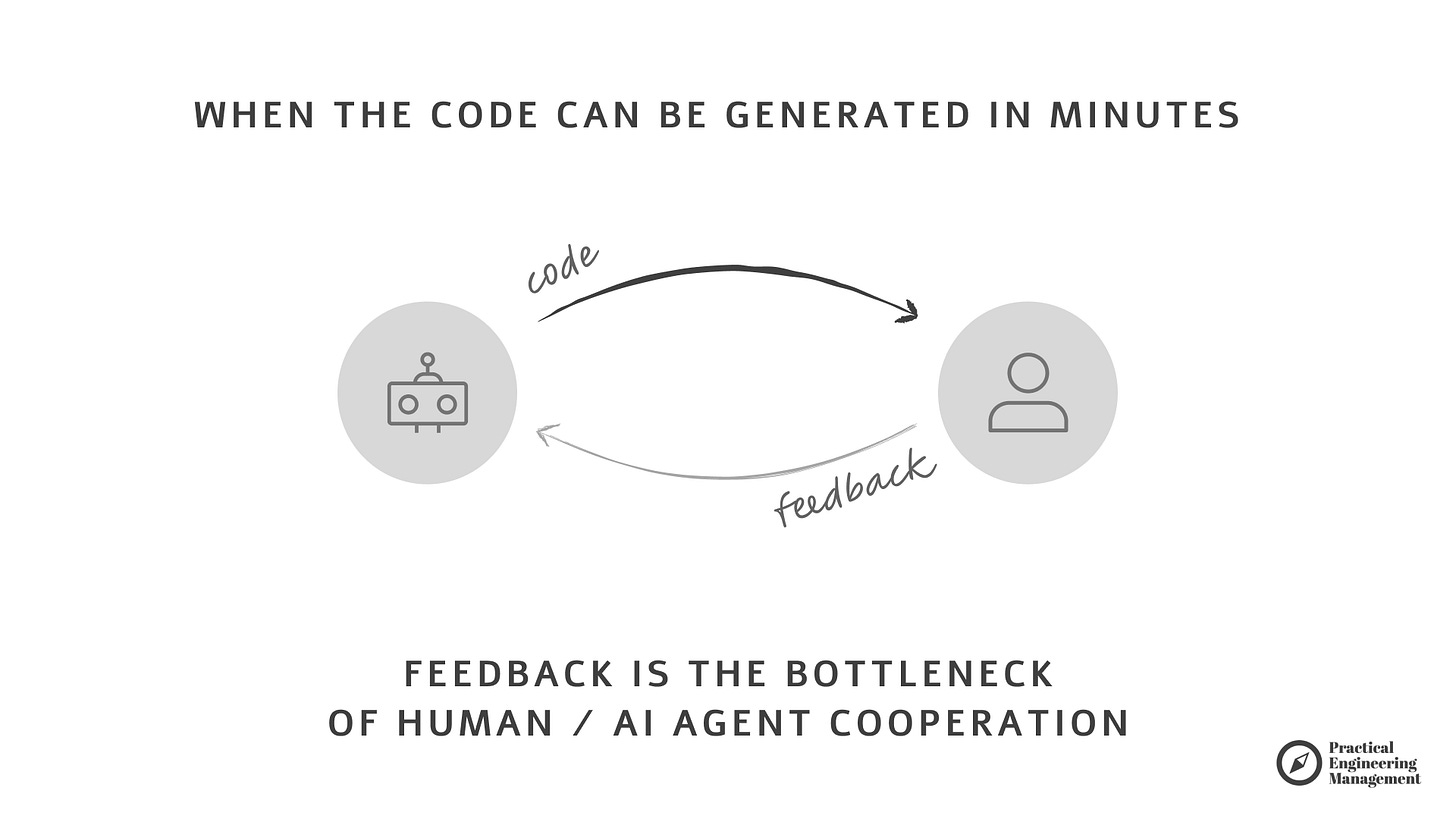The Quiet Disappearance of the QA Tester
AI didn’t kill QA — the feedback loop did
Every few weeks, we see another comment online:
“AI will write all our tests.”
“AI will automate QA.”
“AI will replace testers.”
That’s the wrong diagnosis.
AI isn’t eliminating QA testers because it’s better at testing. AI is eliminating QA testers because humans can no longer sit in the feedback loop.
In Software 3.0, the speed of your feedback loop is your entire competitive advantage.
Let me show you why.
1. The Real Bottleneck: Human Feedback Latency
I’ve spent the last few months building several products in fully agentic mode — hundreds of thousands of lines of code, almost none of which I typed.
I can prototype a few versions of UI and then “translate it” to a full-stack solution within a single day. When building the functionality, it's not the DB models, backend services, or UI components that take up most of my time.
Usually, after 10-30 minutes, I have the first version of the UI that pushes some information to the newly created API endpoint. The business logic performs data processing, and all the data is stored in the freshly updated database model.
It’s magical.
And then the real work begins.
Not architecture.
Not backend logic.
Not UI polish.
But last-mile refinement — missing edge cases, small regressions, subtle bugs.
AI makes the same mistakes we do:
off-by-one errors
missed data model update
unhandled variants
subtly wrong business logic
But here’s the twist: AI can fix its own mistakes instantly, if it gets test feedback fast enough.
Give it a failing unit test?
It fixes the implementation.
Have linters and static analysis?
It cleans up the mess.
AI closes the loop in seconds.
Humans close it in days.
And that delta — seconds vs. days — is the coffin nail for classic QA.
2. Why Manual QA Was Already a Problem (Before AI)
Even before AI, the difference between elite engineering teams and struggling ones was predictable:
Elite teams: deploy daily, catch bugs early, use automation
Struggling teams: deploy weekly/monthly, run big QA cycles, fight fires downstream
This is why Defect Removal Efficiency has always been the crucial metric:
Elite teams remove >95% of defects before code reaches QA.
Low-performing teams rely on late inspection — and pay 10–200× more per bug.
Late QA was always expensive.
Now, with AI, late QA becomes… impossible.
You cannot run a daily deployment cadence while waiting for humans to test features manually.
You cannot sustain flow when a ticket disappears into QA for three days.
You cannot maintain context if feedback arrives long after the coding session ended.
AI accelerates creation.
Manual QA freezes it.
This tension snaps the old model.
If you want to run a QA Shift-Left transformation, I've got you covered in this series of articles.
The entire article is available only for paid subscribers.
You can use the training budget (here’s a slide for your HR).
Thanks for supporting Practical Engineering Management!



